Facing the decision to move a parent into assisted living can feel overwhelming. It’s an emotional and practical challenge, filled with questions about what’s best for your loved one. But remember, you’re not alone! Many families face the same situation, and, by taking the proper steps, you can make this transition smoother and more positive for everyone involved.
Key Takeaways
- Assess your parents’ needs, including their physical, emotional, and social well-being.
- Have open and compassionate conversations with your loved one about their preferences and concerns.
- Research & visit various assisted living communities to find one that aligns with their needs and values.
- Prioritize both your parents’ independence and their safety when considering assisted living options.
What Is Assisted Living?
Assisted living is a type of senior housing that offers personalized care to older adults who need help with daily activities. While it’s not as medically intensive as nursing home care, it provides a balance of support and independence. Residents receive assistance with bathing, dressing, medication management, and meal preparation while enjoying community activities and living space.
Benefits of Assisted Living
Assisted living offers more than just practical support; it provides a holistic approach to well-being. Here are some key benefits:
- Social Interaction: Many communities offer group activities, classes, and events that help combat loneliness and keep residents socially connected.
- 24/7 Support and Safety: Trained staff are available around the clock, ensuring your parents get the help they need when they need it.
- Health and Wellness Programs: Many communities provide exercise classes, wellness checks, and tailored nutritional plans.
- Peace of Mind for Families: Knowing your parent is in a safe environment can ease your worries.
How Do I Know If My Parent Needs Assisted Living?
Recognizing when it’s time for assisted living can be tough. Look for these signs to help guide your decision:
- Difficulty with Daily Activities: If household tasks like cooking, cleaning, or paying bills have become overwhelming, it may be time for extra support.
- Frequent Health Issues: Recurrent falls, missed medications, or difficulty managing chronic conditions can indicate that professional care is needed.
- Isolation and Loneliness: Assisted living can offer a social and supportive environment if your parent withdraws from social activities or seems increasingly lonely.
- Caregiver Burnout: Assisted living could provide a healthier balance for everyone if you or other family members are overwhelmed with caregiving responsibilities.
6 Steps to Take When Your Parent Needs Assisted Living
Once you’ve identified the need for assisted living, following a structured plan can simplify what can feel like a complex process. Here’s how to move forward effectively:
Step 1: Have a Conversation with Your Family
Before making any decisions, have an open and honest discussion with your parent and other family members. Approach the topic with empathy and respect, emphasizing how assisted living could improve your parents’ quality of life.
Allow your parent to express their concerns and preferences, and involve them in the decision as much as possible to instill a sense of control.
Step 2: Understand What Assisted Living Provides
Educate yourself about what assisted living entails. Every community offers a unique mix of services and amenities. Most provide:
- Help with daily activities (bathing, dressing, eating)
- Housekeeping and laundry services
- Nutritious meals prepared by a professional staff
- Social activities and events
- Health monitoring and medication reminders
Understanding these options will help you set realistic expectations for what assisted living can and cannot provide, ensuring that it aligns with your family’s needs.
Step 3: Plan How You’ll Pay for Care
Assisted living costs can vary widely depending on location and services provided. Start planning early to avoid financial stress. Here are some payment options to consider:
- Savings and Pensions
- Long-Term Care Insurance
- Medicaid or Veterans Benefits
- Family Contributions
Be upfront about costs with every community you consider and ensure no hidden fees.
Step 4: Consult Several Sources to Find the Best Community

Not all assisted living communities are the same, so make sure to research them thoroughly. Use multiple sources to gather information, such as:
- Local Recommendations: Ask friends or neighbors for referrals.
- Online Reviews: Websites like SeniorAdvisor or Caring.com can provide insights.
- Tour Guides: Many communities offer virtual or in-person tours to showcase their services.
Compile a list of potential communities that match your parents’ needs and personality for the next step.
Step 5: Tour a Senior Living Community
Once you’ve narrowed your options, schedule tours to see the communities firsthand. This will allow you to assess the community, staff, and overall environment.
Questions to consider during your visit:
- Are residents actively engaged in programs?
- Is the staff attentive and respectful?
- Are the living spaces clean and well-maintained?
- What safety measures are in place?
- Does the dining program offer variety and cater to dietary restrictions?
Encourage your parent to participate in the tour and interact with residents or staff to get a real feel for the community.
Step 6: Prepare for the Transition to Senior Living
Moving into assisted living can be a significant adjustment for your parent. Ease the process with these steps:
- Personalize the Space: Bring favorite furniture, photos, or keepsakes from home to make the space feel familiar.
- Start Small: Encourage your parent to join a few activities or events to meet others gradually.
- Stay in Touch: Regular calls or visits can reassure your parent and help them feel supported.
Be patient during this transition period. Your parent may not fully adjust to their new surroundings for weeks or months.
Helping Your Parent Thrive in Assisted Living
Transitioning to assisted living is never easy, but the right approach can make it rewarding. By involving your family, carefully researching your options, and providing support during the move, you can ensure your parent feels comfortable and cared for in their new home.
Oak Ridge Senior Living is locally owned, and our staff is committed to our residents and maintaining an enriching quality of life. Contact us today to learn how our community can support your loved one in living a fulfilled life.



